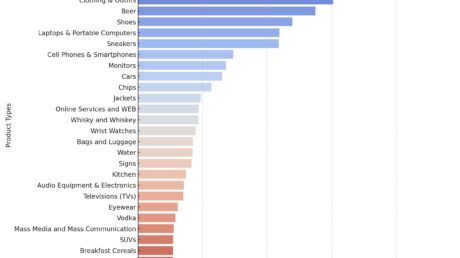As part of The Drum’s Data & Privacy Deep Dive, we explore how brands and agencies can overcome challenges of audience identification, targeting and optimization by embracing contextual AI to drive performance in a cookieless world.
As we hurtle towards a world without third-party cookies, contextual advertising solutions have resurfaced as one of the top methods advertisers will explore. What was old is new again – the difference now being that thanks to innovations in artificial intelligence (AI), advertisers have the extra dash of spice needed to boost and future-proof their strategies.
With growing limitations on the use of third-party cookies, UK advertisers face a myriad of challenges in audience identification, targeting and optimization. But at the same time, it presents opportunities to better leverage first-party data, contextual targeting, AI and machine learning to deepen relationships with customers.
StackAdapt research shows that 71% of UK advertisers believe that contextual targeting will be more important in a cookieless environment, with many exploring potential solutions. Brand marketers are already taking charge of their campaigns, and now agencies have an opportunity to match the need for speed that is becoming apparent, by allowing the platforms they are leveraging for their campaigns to handle the heavy data lift.
What is contextual AI?
Contextual AI is a technology that enables systems to understand and interpret information the same way a human can. It allows for accurate, reliable information in real-time.
While traditional contextual advertising leverages keywords and phrases applicable to your campaign and assigns rules so ads can be accurately aligned with the right content, now advertisers can target not just keywords, but in and out-of-context phrases on a webpage, to unlock a more personalized, efficient and relevant targeting method.
“One of the biggest challenges for UK advertisers is to target the right audience properly and measure the accuracy of their campaigns,” explains Raina Roberts, sales director at StackAdapt. “However, the increased use of machine learning and AI in contextual targeting allows ads to be served in highly relevant environments. Since ads are served within a relevant context, at a specific moment in time when the user is engaged, there is little room for misalignment. By serving ads that are directly relevant to the user, we see high post-view conversions – showing the power for brands to stay front of mind when the user is ready to go back to the site and research more or convert.”
How are brands and agencies using it?
Leveraging a platform that puts a priority on the right technology to drive high-performing contextual ads will ensure the best possible performance and high campaign success.
Digital agency Fountain utilized StackAdapt’s Page Context AI solution for its client, East Midlands Railway (EMR), to derive new performance insights and increase conversions programmatically, without compromising on costs. Monitoring campaign results and optimizing domain categories in real-time allowed the agency to weight towards the targeting parameters that performed best – decreasing its cost per acquisition (CPA) benchmark by 600%, and ultimately driving a 421% return on ad spend (ROAS).
“Together, we thought of unique ways to reach our target audience, and we did so with creatives that [StackAdapt] helped us create, which went beyond our expectations,” says Terri Westgate, digital marketing consultant at Fountain. “We’ve derived incredibly insightful data-based learnings that we implement in the present day and in the future [and have been] testing features that help us exceed performance for our client, like Dynamic Retargeting and the Page Context AI tool. We ended up driving the best ROAS that we’ve seen when compared to other platforms we’ve used in the past.”
Hopes Grove Nurseries turned to Reflect Digital to help translate online advertising into website and in-store traffic. Leaning on StackAdapt’s Page Context AI solution meant the brand could lean on specific keywords to serve ads in highly-relevant environments, targeting users in real-time with a cookieless solution. The multi-tactic campaign drove a conversion rate of 9.23% and ROAS of over 560%.
“Our team was open to testing multiple targeting tactics and optimizing mid-flight to meet our CPA goals,” says Rob Bridgens, former head of paid media at Reflect Digital. “Page Context AI was my personal favorite tactic that we tested, simply because you can take more control of your contextual strategy, to the point of defining its context word by word.”
With a mission to hit a 400% return on ad spend (ROAS) goal in the competitive direct-to-consumer (DTC) e-commerce market, commerce agency The Stable partnered with StackAdapt to test new tactics to reach audiences in different ways and expand sunglasses brand Pit Viper into global markets outside the US.
The new targeting tactics included a lookalike audience of purchasers and contextual targeting. Using StackAdapt’s machine learning and AI capabilities, The Stable incorporated Page Context AI as a contextual targeting method to serve ads to people browsing web pages relevant to sports and events.
“Nowadays, it’s tough to break through the noise of other e-commerce brands trying to fight for consumer attention,” explains Lindsay Romanelli, director of digital media, The Stable. “We thought of a strategy that was hyper customized to the products that we were advertising, and approached relevant users with a tone that they would find appealing. We needed an ad unit that would grab the attention of our ideal user [and] it was super easy to test out different variations, targeting tactics, and ultimately achieve a higher ROAS.”
How can I start exploring contextual AI?
To get ready now for the cookieless future, brands and agencies have an opportunity to explore the benefits of contextual AI as a key marketing tactic. Here’s how:
1. Prioritize implementation: while 69% of UK marketers are exploring various solutions to implement over the next year, just 28% have implemented contextual solutions, finds the StackAdapt research. The sooner advertisers can test and optimize, the better off your campaigns will be in the long run.
2. Identify the learning gaps: if the fear of the unknown about leveraging machine learning and AI is seen as a challenge, take the time to educate and train media buyers, and find the right technology partner to support in this process.
3. Lean on your programmatic partners: in times of uncertainty, lean on your programmatic partners for information, support and learning for understanding nuances in the industry and fostering success. Tapping into that knowledge set for programmatic solutions is the best way to break into the contextual space efficiently and effectively.
4. Execute cookieless tactics now: start exploring strategies now to allow sufficient time for testing and optimizing to ensure future success. Take these learnings and understand how they complement your other audience tactics to ensure high performance.
Previously published by The Drum, written by Jenni Baker




